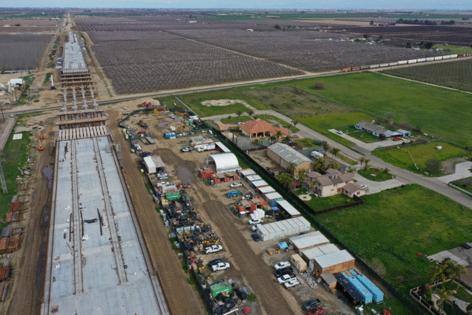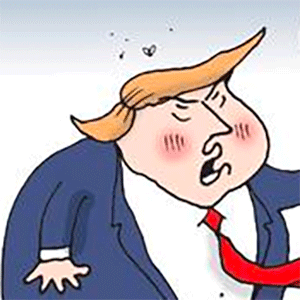Lawmakers urge $1 billion a year investments to save high-speed rail
Published in News & Features
As federal funds for California's high-speed rail project remain suspended, state lawmakers urged the legislature to approve a $1 billion per year investment pulled from cap-and-trade revenues while linking the future of the project to job opportunity across the state.
State Sen. Dave Cortese (D-San Jose) said during a press conference Monday that the monetary commitment would ensure the project continues amid uncertainty around funding.
"We can't build a 21st century transportation system on one-time money alone or with limited resources that don't get us where we're trying to go," Cortese said.
The state's cap-and-trade program requires major polluters to buy credits for carbon dioxide use, and allows those companies to buy or sell the unused credits at auctions, generating billions in state revenue. Earlier this year, Gov. Gavin Newsom proposed setting aside a large chunk of those funds for high-speed rail.
Cortese and others touted the project's impact on small businesses and workers, highlighting its creation of nearly 15,000 jobs that have generated roughly $22 billion in economic growth. State Sen. Lola Smallwood-Cuevas (D-Los Angeles), the chair of the senate labor committee, said that when the line between Los Angeles and San Francisco is someday completed, the project is expected to create more than 1 million jobs and generate roughly $86 billion in labor income.
"Every investment will and must deliver for workers, for the poor, for excluded communities facing barriers to employment," Smallwood-Cuevas said.
The plan to connect the state by fast train is billions of dollars over budget and decades behind schedule. The route from Southern to Northern California was originally proposed for a 2020 completion date, but so far, no stretch of the line has been finished and construction has been limited to the Central Valley.
Delays around permitting and the decision to construct the project along the east side of the San Joaquin Valley instead of the more direct route along Interstate 5 corridor on the west side have contributed to the challenges. Adding to the project's hurdles is the Trump administration's decision to pull $4 billion in funding that was intended for construction in the Central Valley.
High-Speed Rail Authority chief executive Ian Choudri said the project now faces a "crossroads" and that long-term financial commitments are crucial.
"We can choose to let the challenges of the past define the program's future, or we can meet the moment by supporting high-speed rail with the right tools and partnerships," he said.
Roughly $13 billion has been spent on the project, which was originally estimated at a $33 billion budget but has since soared beyond that by $100 billion. Project leaders have said that the stretch between Merced and Bakersfield will be completed by 2033. The portion, which the authority is obligated to prioritize unless the legislature says otherwise, will cost nearly $37 billion. Ridership alone won't be able to account for the cost. If the state agrees to fund the project through 2045 via cap-and-trade, the authority said there wouldn't be a funding gap for this portion of the line. Whether cap-and-trade would be extended after it expires in 2030 also remains a question.
In a report published last week, the authority presented additional scenarios that would expand the line northwest to Gilroy by 2038 for a total cost of $54.4 billion, or would both do that expansion and lay tracks southeast to Palmdale, which would bring the total cost of the line at that point to more than $87 billion. Both options would require regional transportation to connect to Gilroy to San Francisco or Palmdale to Los Angeles.
If the project cannot nail down funding sources, Choudri said it faces considerable challenge.
"If we have long-term funding commitments, we can finance and commercialize and monetize as quick as we can. But in a hypothetical scenario where there is no money to build the house, well, then we don't build the house," Choudri said, comparing it to any construction project that doesn't have funds to support it.
Cortese was quick to say that was currently an unlikely scenario.
Before the Trump administration pulled funding — a move that the state sued over — project leaders and advisers sounded the alarm over the train's financial viability and turned focus towards private public partnerships beyond government funding.
Cortese introduced a bill earlier this year to commission a study on how commercial and residential developments could be leveraged along the train's line in order to incentivize private partnerships. Choudri said the authority has been in discussions with the private sector, which wants to see what investments the state will make in order to determine how to supplement funds.
©2025 Los Angeles Times. Visit at latimes.com. Distributed by Tribune Content Agency, LLC.







Comments